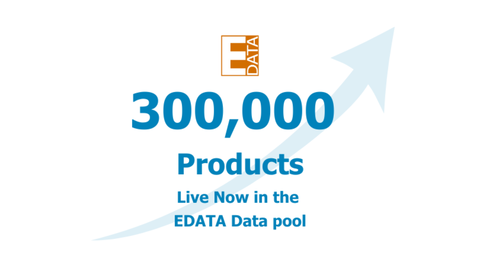The EDATA data pool has achieved a significant milestone and now offers all wholesaler members of the Electrical Distributors’ Association (EDA) free access to enriched product information and images on over 300,000 products.

Since the EDA launched the data pool for the electrotechnical sector in 2020 it has grown rapidly as manufacturers see the commercial advantage in giving their wholesaler customers access to high-quality product information and imagery in a central time-saving hub.
Margaret Fitzsimons, CEO at the EDA, said, “The data pool grows daily, and having cleared the 300,000 product milestone we have 500,000 SKUs firmly in our sights. This growth has been achieved through working closely with manufacturer members, almost like data consultancy, guiding, sharing expertise and adapting strategies depending on where the manufacturer is on their data creation journey. This collaborative working has paid off and the data pool is fast becoming the go-to resource for high-quality technically rich product information. This is exactly what wholesalers need to support sales to their contractor customers over the trade counter, through quotes, tenders and submittals, and e-commerce.”
Richard Appleton, Head of Digitalisation at the EDA added, “Whilst EDATA can be accessed by wholesalers as a stand-alone data hub, its rich data and images are also feeding other software platforms on which UK wholesalers depend, such as ERP systems, e-commerce, and e-catalogues.
“Wholesalers need access to a critical mass of product information and images in one place and, whilst 300,000 products inside is a big number, the quality of that information is paramount. We talk a lot about Gold Quality Product Data in EDATA, and that’s because patchy information on a product isn’t much use to a wholesaler: they need deep, rich information that’s technically complete, data that’s Gold standard. It is why all manufacturer subscribers to the data pool benefit from a comprehensive package of support, advice, and training so they know exactly what their data goal is and how to achieve it.”
.jpg)
